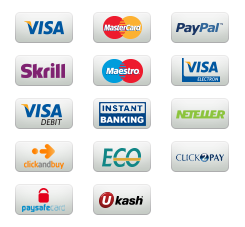Company Analysis
Solve the end of chapter 6 problems listed below using MS Excel.
Q6.3 Philly Air (6 marks)
Q6.4 Oscar’s office building (4 marks)
Comments from Customer
Discipline: Operations Management
These are the questions that you need to answer in MS Excel. I made a mistake with sending the powerpoint.
Q6.3 (Philly Air) PhillyAir Inc. offers low cost air travel between Philadelphia and Atlantic City. Philly Air’s invested capital is $5,000,000, corresponding to the investment in the two planes the company owns. Each of the two planes can carry 50 passengers. Each plane does 12 daily trips from Philadelphia to Atlantic City and 12 from Atlantic City to Philadelphia. The price is $100 for each one-way ticket. The current load factor is 70 percent (i.e., 35 seats are sold on the average flight). The annual cost of operating the service and running the business is $60,000,000 (including all costs, such as labor, fuel, marketing, gate fees, landing fees, maintenance, etc.). The company operates 365 days a year. a. Draw an ROIC (return on invested capital) tree for the company that incorporates all of the above information. [6.2] b. What is the current ROIC?
c. What is the minimum load factor at which the company breaks even? [6.3] d. What load factor would the company have Q6.4 to achieve so that it obtained a 10 percentage-point increase in the ROIC (e.g., an ROIC increasing from 5 percent to 15 percent)?
Q6.4 (Oscar’s Office Building) Oscar is considering getting into the real estate business. He’s looking at buying an existing office building for $1.8 million in cash. He wants to estimate what his return on invested capital (ROIC) will be on an annual basis. The building has 14,000 square feet of rentable space. He’d like to set the rent at $4.00 per square foot per month. However, he knows that demand depends on price. He estimates that the percent-age of the building he can fill roughly follows the equation % Occupied = 2 − 0.3 × Rent (rent is in dollars per square foot per month) So, at $4.00, Oscar thinks he can fill about 80 percent of the office space. Oscar considers two categories of costs: variable costs, which are a function of the square feet occupied, and fixed costs. Fixed costs will be $8,000 per month and include such items as insurance, maintenance, and security. Variable costs cover such things as electricity and heat and run $1.25 per month for each square foot occupied. a. Draw an ROIC (return on invested capital) tree for the company. [6.2] b. What is the ROIC? [6.2] c. What would be the new ROIC be if Oscar decides to charge rent of $5.00 per square foot per month?
Sample Solution

 Our orders are delivered strictly on time without delay
Our orders are delivered strictly on time without delay  Our orders are delivered strictly on time without delay
Our orders are delivered strictly on time without delay 


